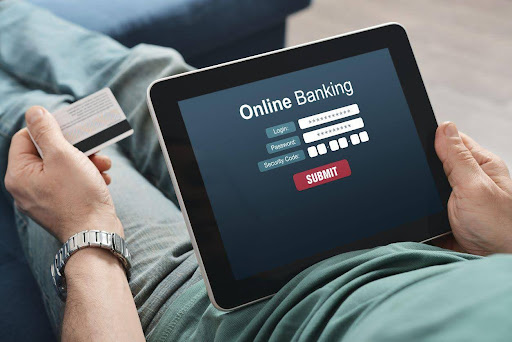Investing in mutual funds presents a variety of strategies to suit the diverse needs of investors. One popular approach in the Indian market is the lumpsum investment strategy. This method involves investing a significant amount of money in a single installment instead of spreading it over time. When done correctly, lumpsum investing can yield substantial returns, but it also involves a certain level of risk and requires a good understanding of market dynamics.
Understanding Lumpsum Investment
A lumpsum investment denotes committing a large sum of money into mutual funds at one go. This strategy is effective when the market is poised for long-term growth. Unlike the Systematic Investment Plan (SIP) where investments are staggered, a lumpsum investment leverages the power of compounding from the day of the investment till the end of the investment tenure.
For instance, consider that an investor puts ₹1,00,000 into a mutual fund that generates an annualized return of 12%. After 10 years, the investment would grow to approximately ₹3,10,584, calculated using the compound interest formula:
\[ A = P (1 + \frac{r}{100})^t \]
where:
– A is the amount of money accumulated after n years, including interest.
– P is the principal amount (initial investment).
– r is the annual interest rate (in percentage).
– t is the time the money is invested for (in years).
Substituting the given figures:
\[ A = 1,00,000 (1 + \frac{12}{100})^{10} = 1,00,000 (1.12)^{10} \approx 3,10,584 \]
However, it is critical to note that returns on mutual funds are subject to market risks and are not guaranteed.
Top Mutual Funds in India for Lumpsum Investment
When selecting mutual funds for lumpsum investment, it is essential to choose funds that have consistently performed well. Here are some categories and examples of some of the top mutual funds in India based on historical performance:
1. Equity Mutual Funds:
– SBI Bluechip Fund: A fund that invests in large-cap stocks and has shown consistent returns due to its diversified portfolio.
– HDFC Mid-Cap Opportunities Fund: This fund focuses on mid-cap companies, which have the potential for high growth.
2. Debt Mutual Funds:
– ICICI Prudential Long Term Bond Fund: A good choice for conservative investors who prefer stability and moderate returns.
– Aditya Birla Sun Life Corporate Bond Fund: Known for its steady returns and lower exposure to market volatility.
3. Hybrid Mutual Funds:
– HDFC Hybrid Equity Fund: Offers a balanced investment in equities and debt securities, providing moderate risk and good returns.
– ICICI Prudential Equity & Debt Fund: Opts for a diversified approach combining equities and fixed income.
Benefits and Risks of Lumpsum Investment
Benefits:
– Potential for High Returns: Investing lumpsum during market lows can yield higher returns when the market rebounds.
– Time-Saving: Single investment saves the hassle of frequent monitoring and additional transactions.
– Simplified Management: Easier to track and manage compared to multiple smaller investments.
Risks:
– Market Timing Risk: Investing a significant amount at once can be risky if the market drops soon after investment.
– Opportunity Cost: Investing all the money at once might mean missing out on better opportunities in the future if the market dips.
– Emotional Bias: Psychological factors can lead to poor decision-making during market volatility.
Strategy for Lumpsum Investment
1. Market Analysis:
Conduct a thorough analysis of the market trends. Investing in a rising market is preferred for lumpsum investments.
2. Diversification:
Spread the lumpsum amount across various funds and asset classes to mitigate the risks. Combining equity funds with debt funds can balance risk and return.
3. Risk Assessment:
Assess the risk tolerance before making an investment decision. High-risk appetite aligns with aggressive funds, whereas conservative investors should stick to debt or balanced funds.
4. Regular Review:
Periodic review of the portfolio is essential to ensure it aligns with the investment objectives and market conditions.
Conclusion
Lumpsum investment in India’s mutual fund market is a viable strategy for those with a substantial amount of capital and a thorough understanding of market dynamics. By selecting the top mutual funds in India and diversifying investments across various asset classes, investors can potentially maximize returns. However, it is crucial to assess market conditions, undertake comprehensive research, and understand the associated risks.
Disclaimer: Investors should evaluate all pros and cons of trading in the Indian financial market thoroughly. The past performance of funds is not indicative of future results. It is recommended to consult a financial advisor to understand the suitability of this investment strategy concerning personal financial goals and risk tolerance.
Summary
Lumpsum investment strategy involves deploying a large sum of money into mutual funds at one time. This approach can harness the benefits of compounding from the outset and potentially yield significant returns, especially when invested in top-performing mutual funds in India such as the SBI Bluechip Fund, HDFC Mid-Cap Opportunities Fund, ICICI Prudential Long Term Bond Fund, and more. While offering high returns and simplified management, lumpsum investing also carries risks like market timing, emotional bias, and opportunity cost. To make the most out of lumpsum investments, investors should conduct thorough market analysis, diversify their portfolio, assess their risk tolerance, and regularly review their investments. It is vital to understand the market dynamics and seek professional advice to align investments with financial goals.








